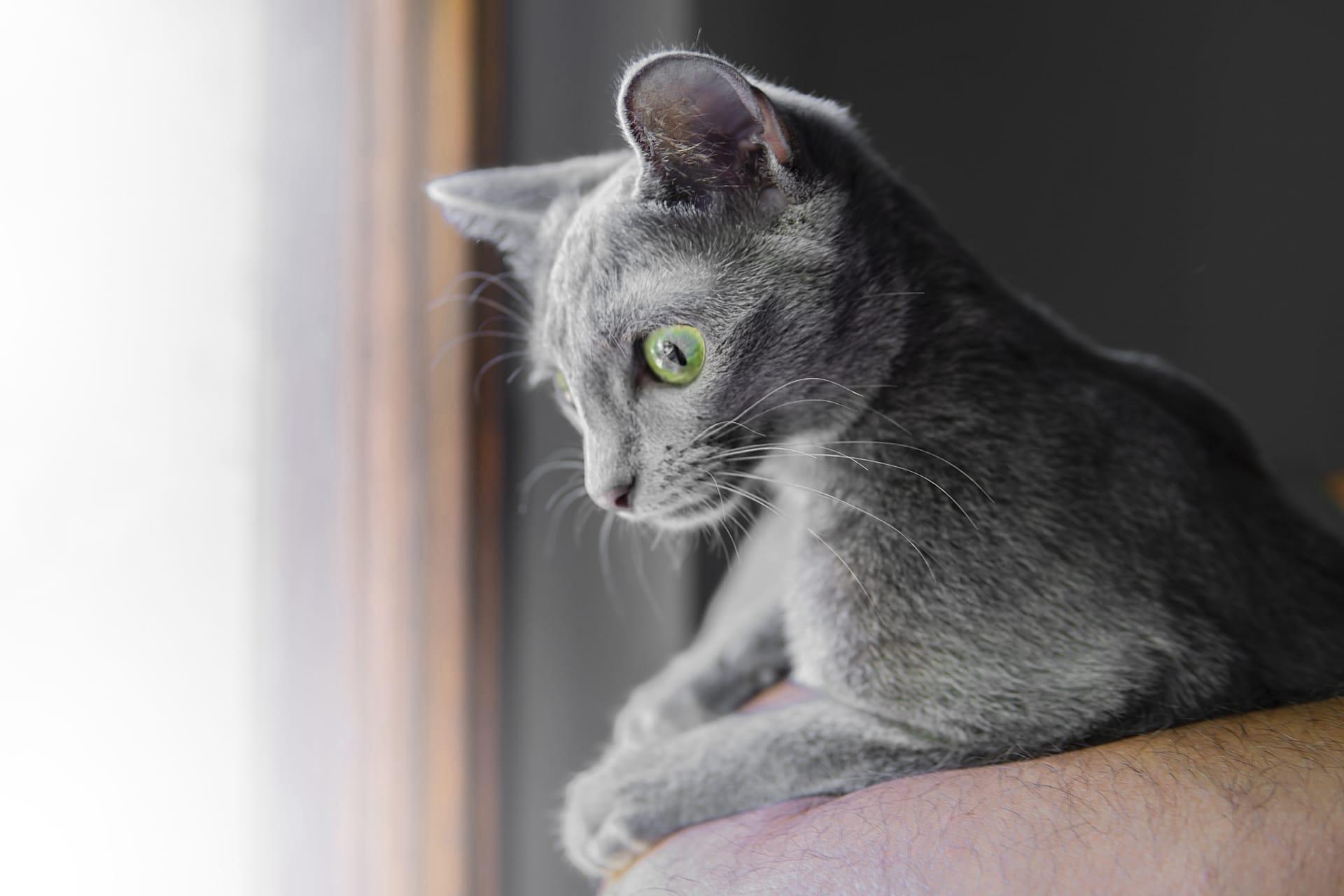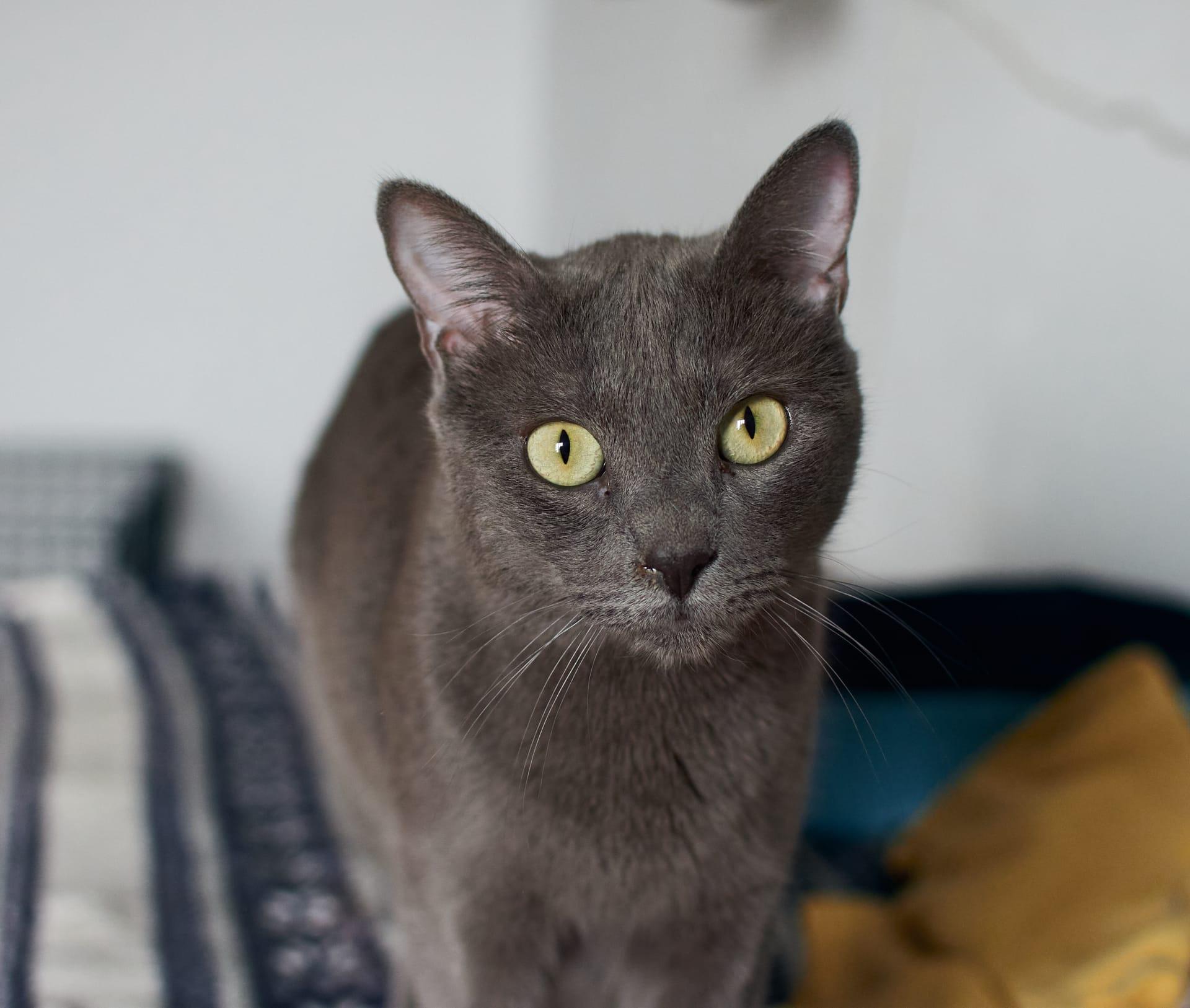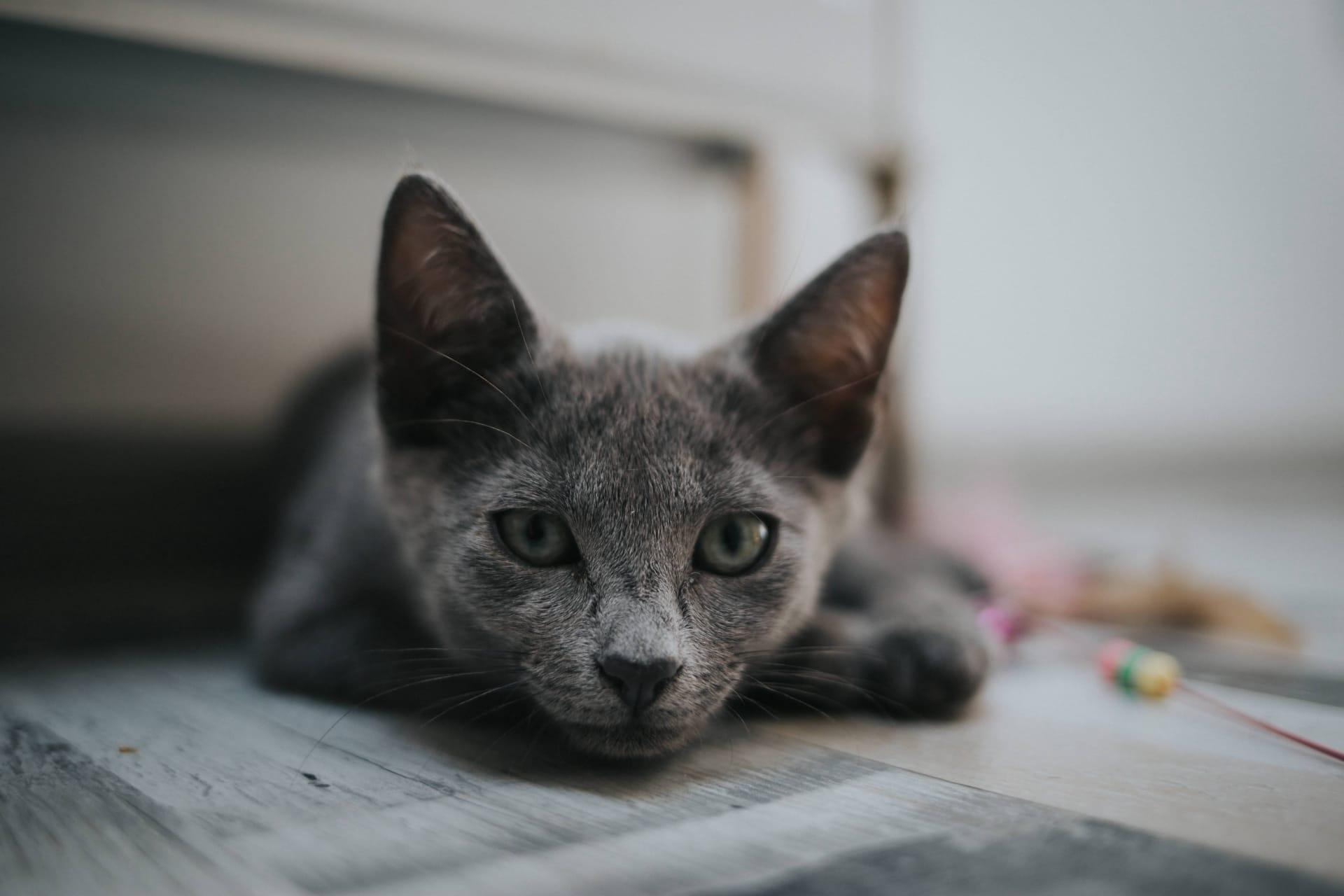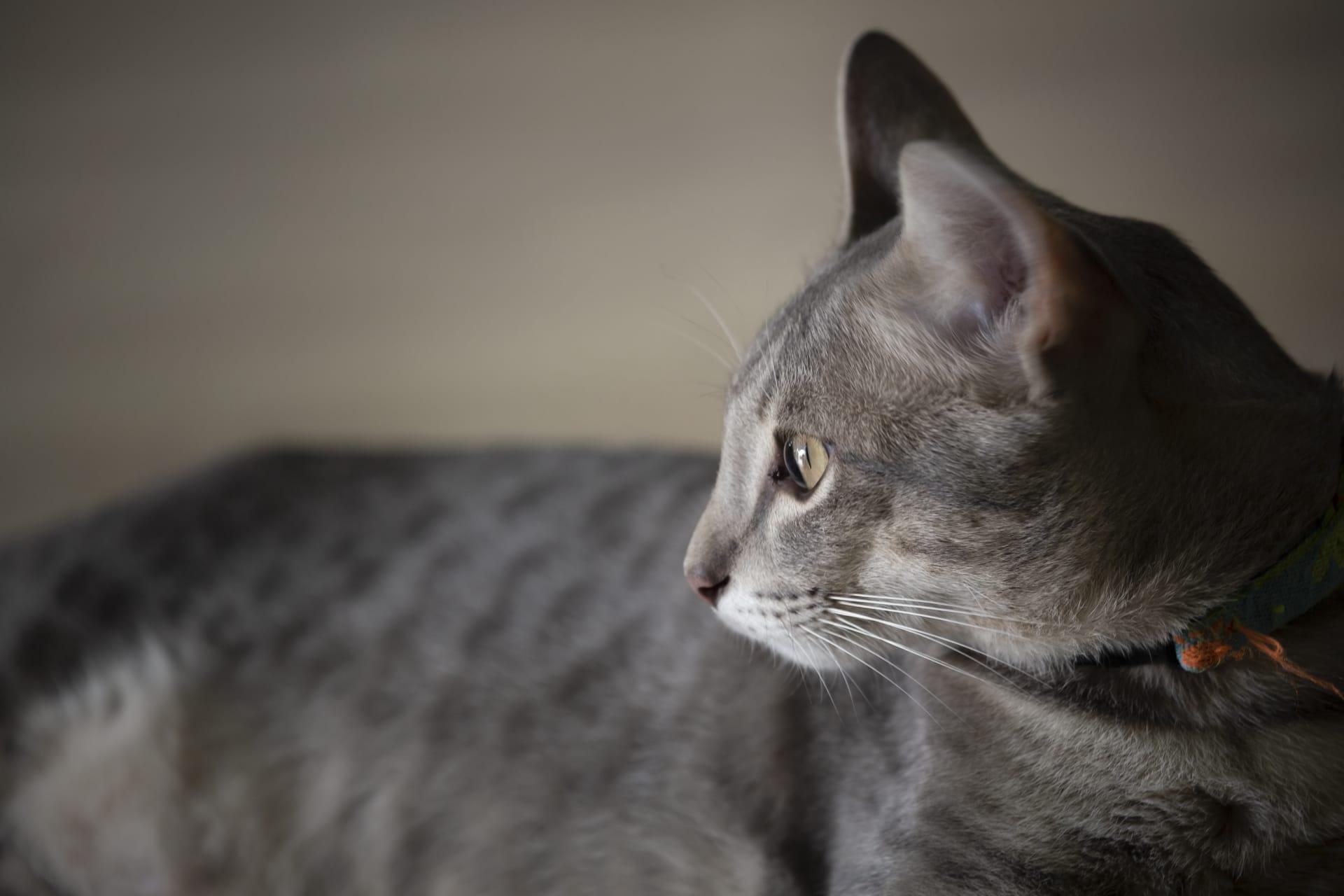Korat Cat Characteristics
- Home /
- Mini Encyclopedia /
- Animal /
- Korat Cat Characteristics
1
Korat Cats, originating from Thailand, are admired for their distinctive silver-blue coat, heart-shaped face, and luminous green eyes. These medium-sized felines typically weigh between 6 to 10 pounds (approximately 2.7 to 4.5 kilograms) and boast a muscular yet sleek build. Their lifespan is notably long, with many Korats living well into their late teens or even early twenties, given proper care and nutrition. The silkiness and shimmer of their coat, alongside their well-proportioned body, make them a striking presence.
The most remarkable organ of a Korat Cat is its eyes. The large, round, and expressive eyes are not just a captivating feature but also play a crucial role in their behavior and interaction. The color of their eyes changes from blue at birth to a bright peridot green in adulthood, a transformation that adds to their mystique. These eyes are not only beautiful but highly functional, granting them exceptional night vision. This enables the Korat to be an effective hunter, capable of seeing in low light conditions much better than humans can. The sensitivity of their vision helps them navigate and hunt in their environment, making their eyes a vital organ for survival and interaction.

2
Question: What is the most common health issue encountered in Korat Cats, and how can it be identified?
Answer: The most common health issue in Korat Cats is a genetic condition known as GM1 Gangliosidosis, a lysosomal storage disease that affects the cat's nervous system. Cats affected by this condition may show signs of muscle weakness, difficulty in coordination, and tremors as early as six months of age. The diagnosis of GM1 Gangliosidosis in Korats is typically made through genetic testing, which can identify carriers of the gene responsible for this condition. Early detection through such testing is crucial for managing the health of breeding cats and can help prevent the spread of this disease within the breed.

3
Korat Cats are known for their agile and playful nature. They possess a high level of energy and enjoy engaging in various forms of physical activity, such as climbing, jumping, and chasing toys. Their athleticism is complemented by their grace and speed, making them fascinating to watch as they move. Korats are not only physically active but also mentally alert, enjoying interactive toys and games that challenge their intelligence.
When it comes to feeding, Korat Cats require a balanced diet rich in protein to support their muscular build and high energy levels. They often prefer smaller, more frequent meals throughout the day. Quality wet food, alongside dry kibble for dental health, provides them with the necessary nutrients. Given their propensity for activity, maintaining an appropriate weight is crucial. Monitoring their food intake and ensuring they have plenty of opportunities for exercise can help keep a Korat healthy and fit.

4
Korat Cats thrive in environments where they can receive ample attention and interaction from their human families. While they adapt well to indoor living, they appreciate spaces where they can climb and explore, such as cat trees or secure outdoor enclosures. Their social nature means they often do well in homes with other pets, provided proper introductions are made. Comfort, safety, and a stimulating environment are key to their well-being.
Reproduction in Korat Cats follows similar patterns to other cat breeds, with a focus on health and genetics being paramount. They reach sexual maturity around 5 to 7 months of age, but responsible breeders wait until they are older before breeding. Ensuring genetic diversity and screening for hereditary conditions like GM1 Gangliosidosis is crucial. Litters are generally small, often comprising 2 to 4 kittens, which allows for thorough care and socialization from an early age.

5
Book: "The Legacy of the Korat: Silver Shadows" is a comprehensive guide authored by Jean Johnson, published in the United States in 1998. This book delves into the history, characteristics, and care of the Korat Cat, providing insights into its significance in Thai culture and its journey to becoming a beloved pet worldwide. Johnson's work is rich with anecdotes, practical care advice, and a detailed look at the breed's unique traits, making it an invaluable resource for both Korat enthusiasts and general cat lovers.
Book: "Korat Cats: A Complete Pet Owner's Manual" by Helga Fritzsche, published in Germany in 2003, offers an extensive overview of the Korat breed, from its origins in Thailand to its status as a cherished companion in homes around the globe. Fritzsche combines detailed care instructions with insights into the breed's personality, health considerations, and breeding ethics. Her book is aimed at providing prospective and current Korat owners with the knowledge needed to ensure a happy, healthy life for these special cats.